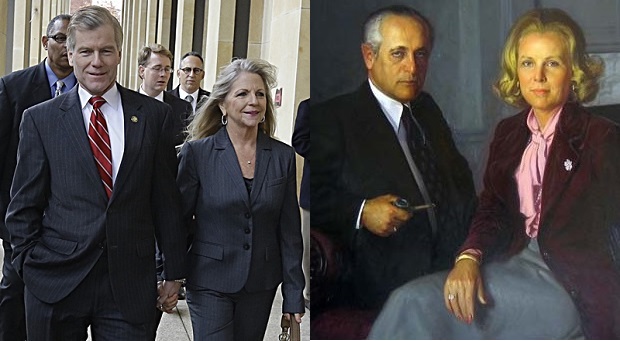Possibly the most important issue facing the Maryland General Assembly this year and every year is how to improve the pervasive problems with our state system of education. It seems that each year we fall further and further behind and drift further and further away from doing what works.
The Public Education System of Maryland is plagued by two wrongs that prevent it from improving. The first is the public education monopoly and the dual efforts of the teachers’ unions and the legislature to keep it that way. The second is our inexplicable refusal to redress the glaring socioeconomic inequity that this system creates.
Perhaps the clearest lesson to come out of the pandemic was that our children are prisoners of a monolithic public school system. And no matter how good your own child’s school may be, the pandemic has shown us that we have very little control over decisions made by an insular and unionized system of public education.
During the pandemic, families who were able to afford it pulled their children out of the virtual-only public school system and enrolled them in private schools, including private schools that offered online learning because these schools had the experience to do it right.
Meanwhile, families without the means to afford private schools continued to sit and wait for the public schools to decide to return their children to school and their lives back to some semblance of normal.
Parents should have a choice about their children’s education. In Maryland, only the wealthy have that choice.
How is that fair? Where is the equity we strive so hard to achieve? Why aren’t my liberal friends beating the drum for school choice? For more access to Charter Schools? Unfortunately, as charter schools have become more successful, there has been a political backlash against charters, with anti-charter-school laws being passed across the country.
The conjunction of an insular education bureaucracy, the rigidity of the teachers’ unions, and the political needs of the state legislature have protected that monopoly forever.
Among all of the expensive suggestions promoted by the Kirwan Commission and legislated in the Blueprint, there was not one mention of any form of school choice. That may be because of the manner in which Maryland treats giving parents an option. For example, The BOOST voucher program provides scholarships for more than 3,000 low-income families giving them a chance to get their kids out of some of the many failing public schools, particularly in Baltimore City. Yet every year, Democrat leaders try to kill the entire program. Even Governor Moore, whose biography praises school choice and details how his family’s ability to send him to non-public schools saved him from becoming like The Other Wes Moore,” tried to cut funds from that program. Fortunately, the President of the Senate, Democrat Bill Ferguson, who represents Baltimore City, successfully lobbied for the program.
And although there are several (successful) charter schools in Baltimore City, they have fallen out of favor and are no longer being sought or approved. Even as more and more states promote Charter Schools and adopt school choice legislation, Maryland clings to the false belief that Charter Schools provide no advantage to students. Anyone who believes that is being deliberately blind to the most clearly proven facts.
In Charter Schools and their Enemies, renowned economist and author, Thomas Sowell, provides incredibly precise comparisons of students in charter classrooms with students in traditional classrooms. That is possible because in New York City, many Charter Schools operate in the same school building as the traditional public school for that area. Charter students are chosen by lottery from among students who are assigned to that school district and have the same characteristics as the students remaining in the traditional classrooms.
Under these unique circumstances, Dr. Sowell was able to compare individual grades and classrooms of students with a reasonable degree of certainty that the scores the students achieve on the New York State authorized tests (English Language Arts and Mathematics) are due almost entirely to the added value that innovative teaching methods charter schools can bring to their students. The book contains more than 40 tables of data, all of which reflect the same striking results. When studied in this almost perfect comparison, Charter Schools are able to educate their students well above the level of traditional schools.
| Grade | Name of School | Percent of students who scored “above Averaged” |
| 6 | Frederick Douglas Academy II: | 0% |
| 6 | Wadleigh Performing Arts & Visual Arts | 4% |
| 6 | SUCCESS ACADEMY CHARTER SCHOOL | 78% |
| 7 | Frederick Douglas Academy II: | 13% |
| 7 | Wadleigh Performing Arts & Visual Arts | 5% |
| 7 | SUCCESS ACADEMY CHARTER SCHOOL | 88% |
| 5 | Henry H. Gamet School | 4% |
| 5 | SUCCESS ACADEMY CHARTER SCHOOL | 79% |
| 3 | Hernandez/Hughes School | 17% |
| 3 | SUCCESS ACADEMY CHARTER SCHOOL | 96% |
| 3 | Mahalia Jackson School | 6% |
| 3 | SUCCESS ACADEMY CHARTER SCHOOL | 79% |
| 4 | Mahalia Jackson School | 6% |
| 4 | SUCCESS ACADEMY CHARTER SCHOOL | 76% |
| 5 | Mosaic Preparatory School | 8% |
| 5 | SUCCESS ACADEMY CHARTER SCHOOL | 77% |







Amen. Thank you for calling out the people who claim to be the champions of the underprivileged while they are their enemies!